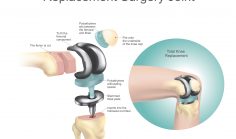The treatment for diabetes can vary from type to type. Below are the main medications for each type of diabetes:
Type 1 Diabetes
Insulin is the primary medication used to treat type 1 diabetes. Up until the 1980s, medical grade insulin was made from purified pig or cow insulin. Today, medical grade insulin is made in laboratories using genetic recombinant technology to allow pancreatic cells in laboratory cultures to produce insulin.
There are four different types of insulin that can be taken. These are:
- Rapid-acting (Humalog, Novolog, Apidra): begins to work after 15 minutes, peaks in 30 to 90 minutes, and has a duration of three to four hours.
- Short-acting (Humulin R, Velosulin – for use with a pump): begins to work in 30 to 60 minutes, peaks in two to three hours, and has a duration of three to six hours.
- Intermediate-acting (NPH): begins to work in 90 minutes to six hours, peaks in four to 14 hours, and has a duration of up to 24 hours.
- Long-acting (Lantus, Levernir): begins to work in six to 14 hours and remains effective for 24 to 36 hours.
Insulin is administered by injection several times throughout the day so that it can avoid the digestive enzymes of the stomach, which would otherwise destroy it.
Insulin injections come in the form of:
- Syringe and vial. When insulin injections are done properly, most people find that they are relatively painless. Insulin is usually given as a subcutaneous injection, meaning that the needle is inserted into the fat layer between the skin and the muscle and deposits the insulin there.
- Insulin pens look like an old-fashioned cartridge pen, except that it is disposable, has a needle, and holds a pre-filled cartridge of insulin. Pens are particularly useful for people who travel frequently, whose coordination is impaired, or those who have visual difficulties. They are also more useful for people who require very small doses of insulin.
- Pump. This is a computerized device about the size of a beeper that is worn on the belt or in a pocket. It delivers a steady, measured dose of insulin through a flexible plastic tube called a cannula. With the aid of a small needle, the cannula is inserted through the skin, usually in the abdominal region, and is taped in place. In some products, the needle is removed and only a soft catheter remains in place. Pumps can deliver very precise insulin doses for different times of the day.
- Symlin (pramlintide), is an injectable medication that is always used in combination with insulin and never alone. Symlin is a synthetic version of the body’s natural amylin, a peptide hormone co-secreted with insulin by the pancreas. Symlin is used to control high blood sugar that can occur after meals.
Type 2 Diabetes:
If diet and exercise do not help keep your blood sugar at normal or near-normal levels, your doctor may prescribe medication. Since these drugs help lower your blood sugar levels in different ways, your doctor may have you take more than one drug.
Here, from the American Diabetes Association web site, are the ADAs definitions of the types of medications used to treat diabetes:
- Sulfonylureas. These stimulate the beta cells of the pancreas to release more insulin. Sulfonylurea drugs have been in use since the 1950s. Chlorpropamide (Diabinese) is the only first-generation sulfonylurea still in use today. The second-generation sulfonylureas are used in smaller doses than the first-generation drugs. There are three second-generation drugs: glipizide (Glucotrol and Glucotrol XL), glyburide (Micronase, Glynase, and Diabeta), and glimepiride (Amaryl). These drugs are generally taken one to two times a day, before meals. All sulfonylurea drugs have similar effects on blood glucose levels, but they differ in side effects, how often they are taken, and interactions with other drugs.
- Biguanides. Metformin (Glucophage) is a biguanide. Biguanides lower blood glucose levels primarily by decreasing the amount of glucose produced by the liver. Metformin also helps to lower blood glucose levels by making muscle tissue more sensitive to insulin so glucose can be absorbed. It is usually taken two times a day. A side effect of metformin may be diarrhea, but this is improved when the drug is taken with food.
- Meglitinides. These are drugs that also stimulate the beta cells to release insulin. Repaglinide (Prandin) and nateglinide (Starlix) are meglitinides. They are taken before each of three meals.
- Because sulfonylureas and meglitinides stimulate the release of insulin, it is possible to have hypoglycemia (low blood glucose levels).
- You should know that alcohol and some diabetes pills may not mix. Occasionally, chlorpropamide and other sulfonylureas, can interact with alcohol to cause vomiting, flushing or sickness. Ask your doctor if you are concerned about any of these side effects.
- Thiazolidinediones. Rosiglitazone (Avandia) and pioglitazone (ACTOS) are in a group of drugs called thiazolidinediones. These drugs help insulin work better in the muscle and fat and also reduce glucose production in the liver. The first drug in this group, troglitazone (Rezulin), was removed from the market because it caused serious liver problems in a small number of people. So far rosiglitazone and pioglitazone have not shown the same problems, but users are still monitored closely for liver problems as a precaution. Both drugs appear to increase the risk for heart failure in some individuals, and there is debate about whether rosiglitazone may contribute to an increased risk for heart attacks. Both drugs are effective at reducing A1C and generally have few side effects.
- DPP-4 Inhibitors. A new class of medications called DPP-4 inhibitors help improve A1C without causing hypoglycemia. They work by preventing the breakdown of a naturally occurring compound in the body, GLP-1. GLP-1 reduces blood glucose levels in the body, but is broken down very quickly so it does not work well when injected as a drug itself. By interfering in the process that breaks down GLP-1, DPP-4 inhibitors allow it to remain active in the body longer, lowering blood glucose levels only when they are elevated. DPP-4 inhibitors do not tend to cause weight gain and tend to have a neutral or positive effect on cholesterol levels. Sitagliptin (Januvia), saxagliptin (Onglyza), linagliptin (Tradjenta), alogliptin (Nesina) are the DPP-4 inhibitors currently on the market in the US.
- SGLT2 Inhibitors. Glucose in the bloodstream passes through the kidneys, where it can either be excreted or reabsorbed. Sodium-glucose transporter 2 (SGLT2) works in the kidney to reabsorb glucose, and a new class of medication, SGLT2 inhibitors, blocks this action, causing excess glucose to be eliminated in the urine. Canagliflozin (Invokana) and dapagliflozin (Farxiga) are SGLT2 inhibitors that have recently been approved by the FDA to treat type 2 diabetes. Because they increase glucose levels in the urine, side effects can include urinary tract and yeast infections.
- Alpha-glucosidase inhibitors. Acarbose (Precose) and meglitol (Glyset) are alpha-glucosidase inhibitors. These drugs help the body to lower blood glucose levels by blocking the breakdown of starches, such as bread, potatoes, and pasta in the intestine. They also slow the breakdown of some sugars, such as table sugar. Their action slows the rise in blood glucose levels after a meal. They should be taken with the first bite of a meal. These drugs may have side effects, including gas and diarrhea.
- Bile Acid Sequestrants. The bile acid sequestrant (BAS) colesevelam (Welchol) is a cholesterol-lowering medication that also reduces blood glucose levels in patients with diabetes. BASs help remove cholesterol from the body, particularly LDL cholesterol, which is often elevated in people with diabetes. The medications reduce LDL cholesterol by binding with bile acids in the digestive system; the body in turn uses cholesterol to replace the bile acids, which lowers cholesterol levels. The mechanism by which colesevelam lowers glucose levels is not well understood. Because BASs are not absorbed into the bloodstream, they are usually safe for use by patients who may not be able to use other medications because of liver problems. Because of the way they work, side effects of BASs can include flatulence and constipation.
- Oral combination therapy Because the drugs listed above act in different ways to lower blood glucose levels, they may be used together. For example, a biguanide and a sulfonylurea may be used together. Many combinations can be used. Though taking more than one drug can be more costly and can increase the risk of side effects, combining oral medications can improve blood glucose control when taking only a single pill does not have the desired effects. Switching from one single pill to another is not as effective as adding another type of diabetes medicine.
If blood sugar cannot be controlled by any of the above medicines, insulin injections may be necessary.
Gestational Diabetes
According to the Mayo Clinic, between 10 and 20 percent of women with gestational diabetes need insulin. In addition, some physicians prescribe an oral blood sugar control medication (see the list above). However, other doctors feel that not enough research has been done to confirm that oral drugs are as safe and as effective as injectable insulin for pregnant women with gestational diabetes. If your doctor prescribes an oral medication, you may want to consider getting a second opinion.
Many people with diabetes use combinations of medications and insulin to better control and manage their condition. Your physician and the other members of your care team will help determine what is best for you.













